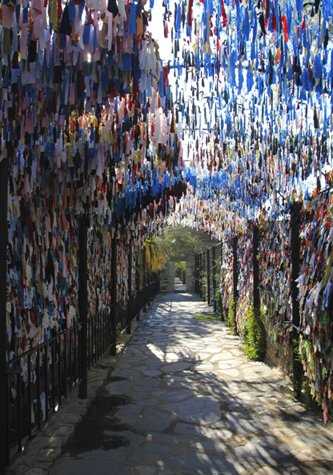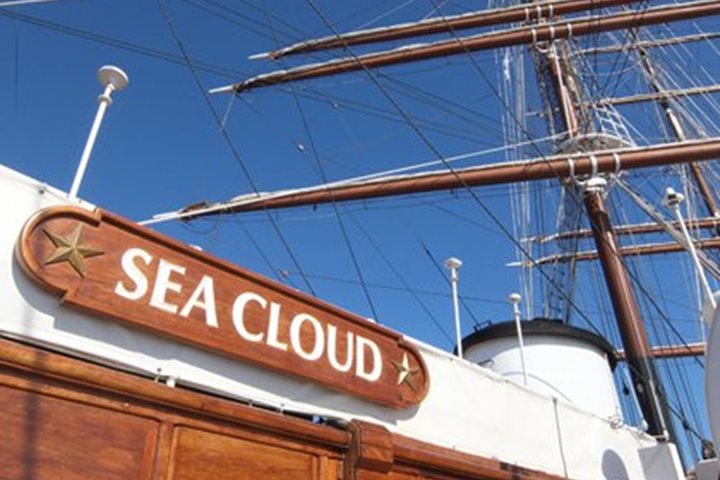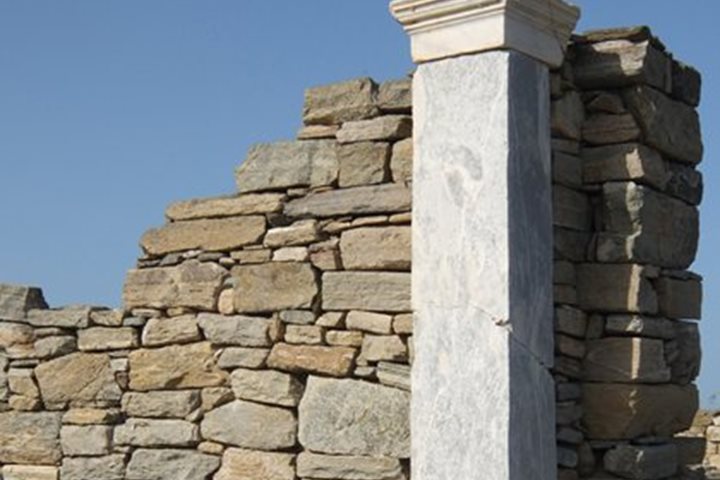Bodrum—ancient Halicarnassus, home of Herodotus, the Father of History, was just waking up as the crew made fast our lines at the dock. Founded by the Dorians, the city became the capital of Caria, which like the rest of Anatolia was swallowed up by the Persian Empire in 5th century B.C. Maussollos, one of the Persian satraps, erected a monumental tomb here, the Mausoleum of Halicarnassus, which was to become one of the Seven Wonders of the Ancient World. When Alexander the Great conquered the city in 344 B.C., he razed every structure to the ground, save the great tomb, which was later destroyed by earthquakes in the 7th century A.D.
In 1402 the Knight of St. John, The Hospitalliers, used the massive blocks of the Mausoleum to build the great castle of St. Peter that still dominates the center of the town. Standing tall on a rocky peninsula and boarded by water on three sides, the five towers of the inner keep are surrounded by a double curtain wall and a dry moat. The Knights are long gone and the castle now houses the Turkish Museum of Underwater Archaeology, which was the focus of our morning visit to Bodrum. Climbing up the well-worn medieval steps and ramps, we passed through six narrow gates before reaching the upper entrance of the central keep. Entering into the lower courtyard in front of the Spanish chapel we stopped to visit a large display of Aegean amphorae before starting our climb up to the various towers that house the numerous shipwreck exhibits. The lush terraced gardens that cling to the steep rocky slopes between the towers were full of pink oleander, red hottentot fig, and a large collection of New World cacti sprinkled with old stone anchors, broken amphorae, and the odd peacock.
We started our visit to the Museum in the Uluburun gallery where we found a full-sized replica of the oldest shipwreck in the world, a late Bronze Age Canaanite ship, with a cargo of copper and tin ingots, perfumed resin, ivory, ebony logs, Cypriot pottery, ostrich eggs, musical instruments, glass ingots, and gold jewelry. After visiting the English tower, which was built with funds supplied by Henry IV, it was on to see the early 11th century Serçe Liman Wreck, with its incredible collection of Islamic glass. While archaeologist found 87 intact etched glass vases and beakers, the majority of the glass was factory waste and broken glass that was destined to be recycled, yet now 1,000 years after it sank to the bottom of the sea, archaeologists have reassembled this astonishing collection of over 200 different vessel shapes from mosque lamps, delicate perfume bottles, etched drinking glasses to mold-blown dimpled bowels of a variety of colors. The 25% of the ship that survived was conserved and reconstructed in the Glass Hall, giving us new insight into the design of this small coastal trader that archaeologists believe was a Byzantine ship from southern Thrace.
After the museum, the shops of Bodrum beckoned! The market was choker-block full of small shops selling leather bags, multi-colored pashminas, Turkish pottery, jewelry to tempt every budget so we had no problem spending the last of our Turkish lira before boarding the Sea Cloud for a truly fantastic afternoon of sailing in the Bay of Gökova. Sailing southwest, yards braced to starboard, we raced along at seven knots for three hours before coming about, bracing the yards to port so we could retrace our course to arrive off the main harbor of the island of Kos just before sunset. We truly could not have asked for a more perfect day!







